Join Helena Costa from Alma de Luce, who brings you this exclusive conversation with Georges Kachaamy, Architect, Professor, Author, and Artist, a visionary creator who thrives in multiple domains.
Explore his groundbreaking work in Gravity Defiant Architecture, his evolving artistic journey, and his pioneering XR-Education initiatives, and delve into his philosophical musings in "INCARNATIONS: at Immortality's Threshold." This interview promises a fascinating glimpse into the world of a polymath.
Helena Costa: Georges, you are an architect, teacher, artist, and author. What drove you to pursue such diverse disciplines? Did one passion lead you to the others, or was it a natural inclination to explore multiple creative avenues?
Georges Kachaamy: To truly understand the multi-layered journey I have embarked on, it is important to peek into the unique beginnings of my life story, as these experiences ignited my exploration through diverse fields. My narrative commenced amidst the turbulence of the Lebanese civil war, a setting that birthed my enduring quest for peace and well-being, both within myself and in the world around me. This pursuit has persistently sculpted the trajectory of my life, guiding me towards the exploration of rich and varied fields such as architecture, art, education, and literature.
Speaking about one passion, at age 12, I found refuge in Eastern philosophies and began practicing meditation. This marked the start of my self-discovery journey and left a lasting impact on my life as well as shaped decisions spanning from my academic pursuits to my lifestyle choices. My academic voyage reached a significant milestone with my doctoral studies, undertaken during years spent in Japan where I delved deeply into the understanding of the Zen monk’s space of meditation, particularly those of the Soto sect.

Immersing myself in the serene environments of renowned temples like Eiheiji and Chokukuji, in addition to my observation of their monks daily activities, I gained deeper insights into how space can enhance wellbeing. This in-depth exploration, reinforced my conviction in the transformative influence of space on our state of mind.
Certainly, my fascination with meditation did not just stay in the realm of academia. It seeped into my design process, providing me the opportunity to view space not just as an empty void but as a vessel teeming with endless possibilities. This shift in perspective sparked a curiosity in me: How can we design architectural spaces to promote mental serenity and well-being? How can we make buildings that serve as sanctuaries for the mind?
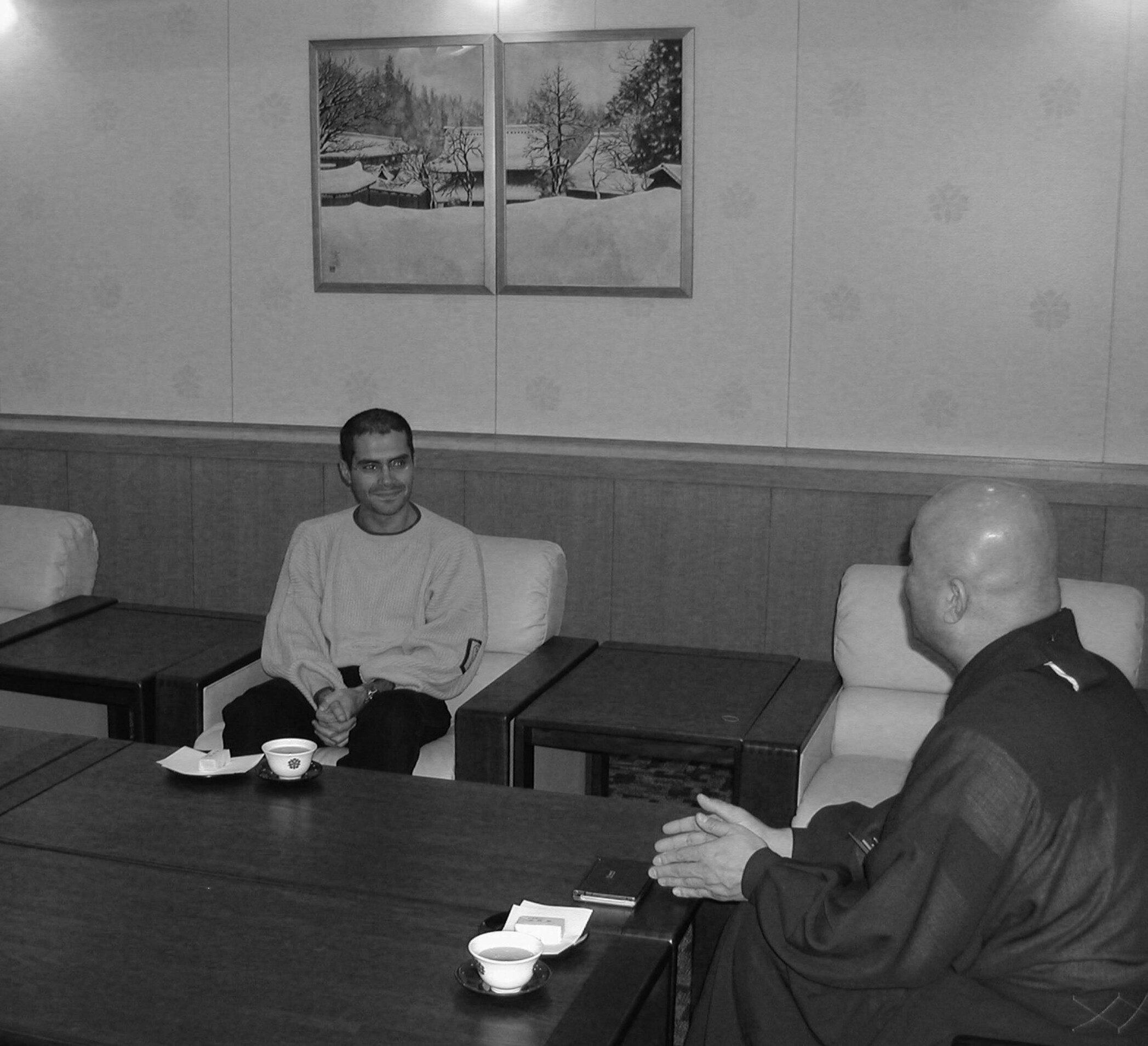
Today, my life is a tapestry of architecture, art, education, and literature. These disciplines, while unique in their own right, are intertwined in my world, each inspiring and enriching the other. No matter the field, my core pursuit remains the same - peace and well-being, a testament to the transformative power of space and mindfulness.
HC: As an architect who is also involved in teaching, can you share where your passion for architecture and education stems from? What experiences or influences have shaped your love for these fields?
GK: My passion for architecture and education is deeply rooted in the interplay between space, wellbeing, and human experience. These fields allow me to explore, create, share, and contribute to the knowledge that shapes our built environment and how we interact with it.
At an early stage, I started to notice the ways in which physical spaces could affect our emotional states, how they could become a sanctuary in an otherwise volatile world. This exposure to the impactful role of architecture triggered my lifelong fascination with the creation of spaces that are not just functional, and aesthetically appealing, but can elevate our quality of life, intensify our experiences, and influence our wellbeing.
When it comes to education, my passion was ignited during my doctoral studies in Japan. There, I experienced firsthand the power of knowledge and intellectual exchange in broadening horizons and inspiring innovation. Over the last 15 years in Dubai, I have been fortunate enough to see education from two different angles: teaching and administration. As a teacher, I have cherished the chance to share my knowledge and experiences, sparking curiosity, empowering critical thinking, and embarking on a journey of exploration with my students. But teaching is not a one-way street; I have grown from the fresh, innovative ideas my students bring to the table, continually learning and evolving alongside them.
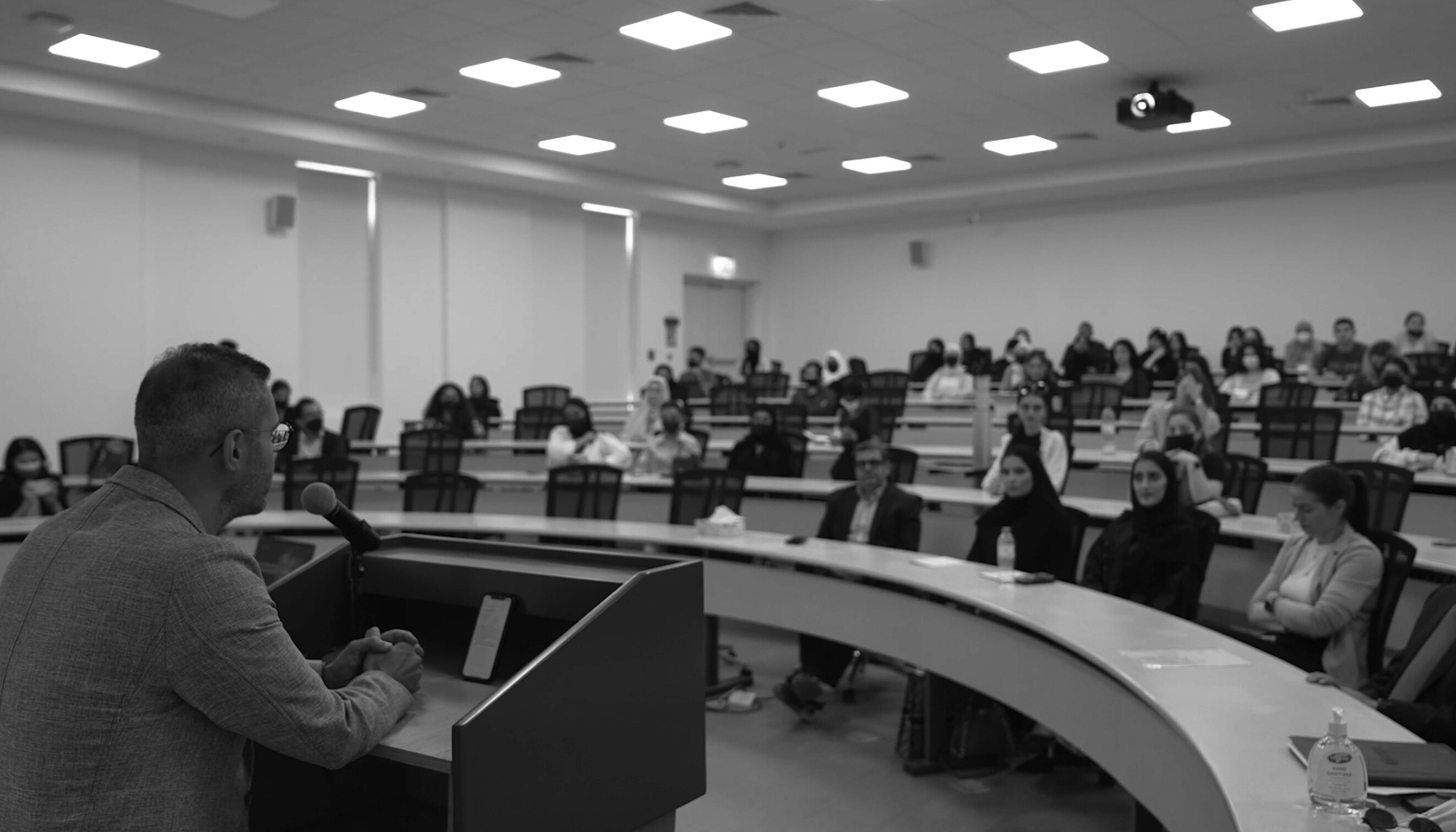
On the administrative side, my former position as the chairperson of the department of architecture taught me the power of service. I have come to understand the delicate balance between senior administration, faculty members, and student body, and the importance of ensuring that everyone's needs are met. This has been an enriching experience that augmented my understanding and commitment to education.
Moreover, academic research keeps me at the forefront of architectural theory and practices, challenging me to continually progress and redefine the boundaries of my work. Both architecture and education offer different yet intertwined avenues and form a powerful duo that continually fuels my work and ideas.
HC: In the field of architecture, when you were completing your graduate studies at the University of Tokyo 13 years ago, you conceived research that consisted of a series of free-floating built environments. Can you provide an overview of your concept that utilizes natural resources to facilitate relaxation? How did you come up with this innovative idea?
GK: Indeed, my graduate studies at the University of Tokyo were instrumental in shaping my philosophical and practical approach to architecture. Supported by Japanese governmental scholarship, my doctoral dissertation, “ŚŪNYATĀ OF SPACE: Investigation into the Influence of 'Emptiness' in Architectural Space,” provided me with a hands-on opportunity to delve deeper into the subject of creating spaces inspired by the monk’s spaces of meditation. Specifically, “Emptiness: The Experimentation,” an evidence-based spatial experiment conducted in Tokyo on 166 individuals, has demonstrated the potential of architecture to affect well-being and has shown how mindful designs can profoundly influence personal tranquility.
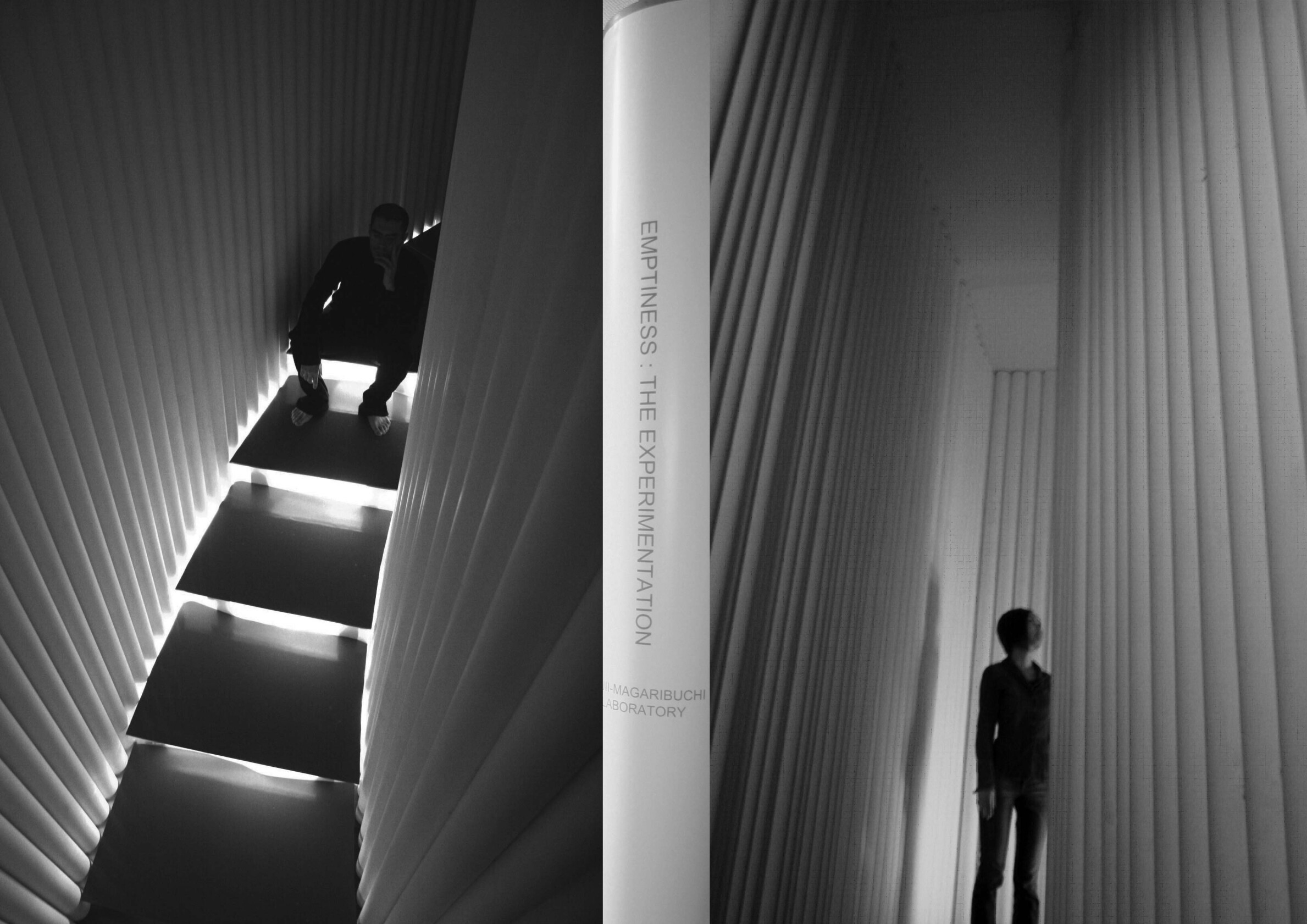
Prior to the constructions of the experiment, the design was globally awarded by the International Union of Architects (UIA). It was appreciated as a sanctuary, providing a tranquil respite from the bustling urban environment. Think of it as a city retreat, a serene escape nestled within the heart of the metropolis itself.
The inspiration for the ‘Rising Oases Saga’ and the concept of Gravity Defiant Architecture, also known as Airborne Architecture, stemmed from this vision - to create a distinct, independent place, completelly detached from its surrounding. This envisioned sanctuary, which you might think of as an 'escape', was designed to provide a space for rejuvenation and reconnection, a true oasis suspended above the mundane.
It is well established that nature, in general, has restorative effect on our wellbeing. Incorporating natural elements into the designs, I aimed to enhance their therapeutic potential. From harnessing sunlight for illumination to using water, vegetation, and the sky, I sought to create a seamless integration between the built environment and the natural world.

In sum, my architectural vision is a loom that weave Eastern philosophy, meditation practices, the healing power of nature, innovative technologies, and creative designs, to culminate in spaces promoting wellbeing.
HC: Can you share with us a defining moment from your career as an architect that had a profound impact on your journey and why it was so memorable to you?
GK: In essence, my architectural journey is not marked by a singular defining moment but is a rich mosaic of experiences and insights that continually shape and redefine my philosophy and approach to design, making it a truly multifaceted and evolving journey. The latest project I designed was the executive MBA building at the American University in Dubai, which contains many of these influences. It reflects a play between the hidden and the revealed, highlighting the power of illuminating spaces from above, providing transparency that connects to nature outside, and incorporates a sense of calm and purity, of course, it also takes into consideration the context and the harsh sun of the city.
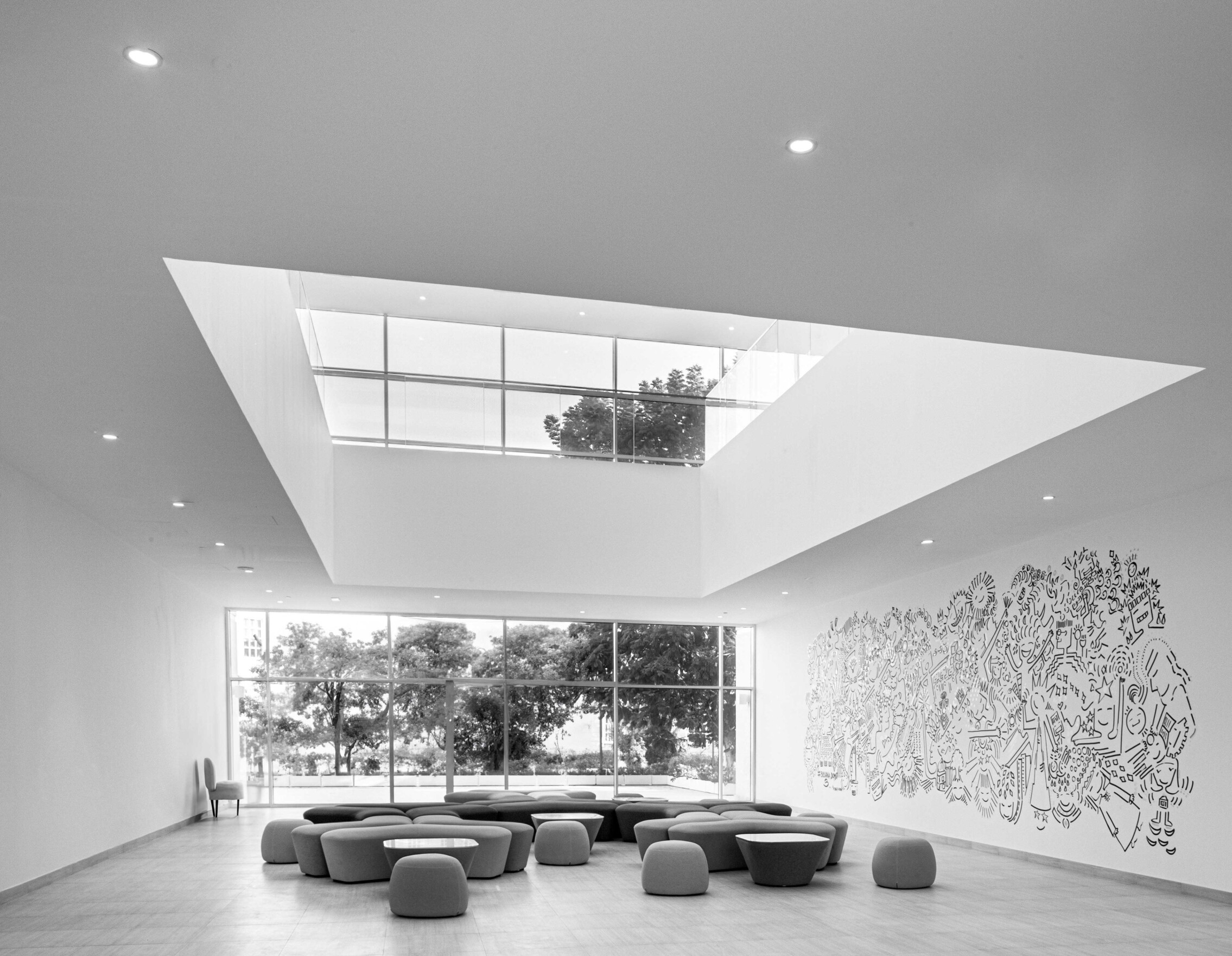
Truly, it is difficult to single out one instance as the profound moment as every experience has shaped my perspectives and approaches, from my early interest in Eastern philosophies to my most recent research in airborne architecture.
HC: You are the first and only Certified VR Sketch Instructor and Certified GRAVITY SKETCH Instructor in the MENA region. Could you elaborate on the potential power of immersive education as a progressive learning method?
GK: Harnessing the power of innovative technologies has always been a cornerstone of my work. The mastery of tools at our disposal not only amplifies creativity but also fosters the generation of impactful, relevant designs. Currently, as the Director of the Center for Research, Innovation, and Design (CRID), my role encompasses leading the school's research initiatives and maintaining the currency of our curriculum with the latest technological breakthroughs in architecture and design. I view the center as a safe haven for creative exploration and experimentation, with a focus on the triad of transformative technologies: Artificial Intelligence (AI), Virtual Reality (VR), and Augmented Reality (AR).
I have often emphasized the potency of extended reality technologies in various forums where I have been invited to discuss this subject. Here, I echo those sentiments; there is an unrivaled power in immersive experiences. The integration of immersive education across all disciplines, not limited to design, is a compelling necessity. It lifts us from the constraints of two-dimensional learning into a dynamic, three-dimensional immersive environment. By bridging the gap between the physical and digital, it creates a richly interactive, engaging educational landscape that has the potential to revolutionize how we learn and innovate.
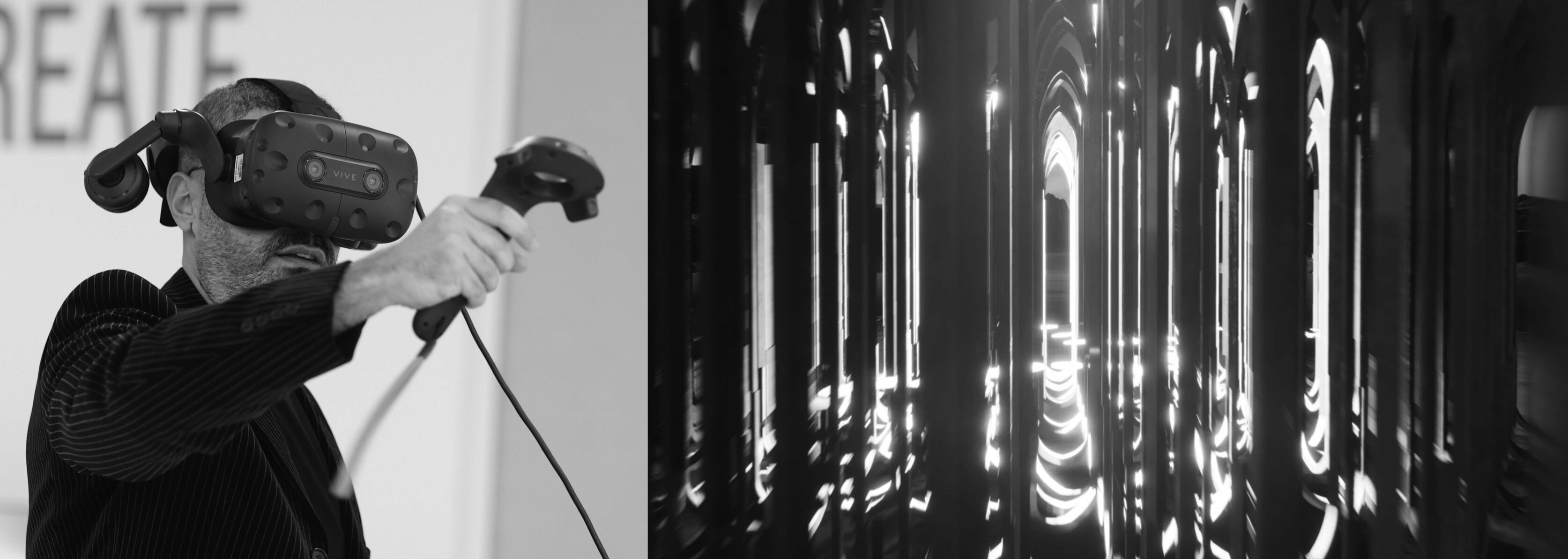
The true power of immersive education extends beyond the practicalities of spatial manipulation and enhanced visualisation. Immersive education cultivates a sense of presence and engagement that is hard to replicate in traditional learning settings. Students are not just passive receivers of information but active participants in their learning and creative process.
Moreover, in my capacity as a researcher, I consistently undertake and publish comprehensive studies on the influence and effectiveness of these immersive tools and experiences. My investigative process involves conducting surveys and experiments, engaging all participants who are part of this progressive learning method. This not only ensures a well-rounded view but also contributes to the growing body of knowledge on immersive education.
HC: In your experience as a certified instructor, what specific benefits have you observed in students who have engaged in immersive education? How does it contribute to their overall learning and skill development?
GK: By leveraging VR and AR in design instruction, we create an immersive environment where ideas can be visualized and manipulated in three-dimensional space. This direct interaction with the design object enhances spatial comprehension, fostering a more integrated understanding of form and function. VR Sketch and Gravity Sketch are powerful tools for design ideation and collaboration. It facilitates a hands-on, interactive learning experience that enhances students' creative thinking and problem-solving skills. By working within a three-dimensional, virtual workspace, students can experiment with design forms and structures in ways that would not be possible in a two-dimensional setting.
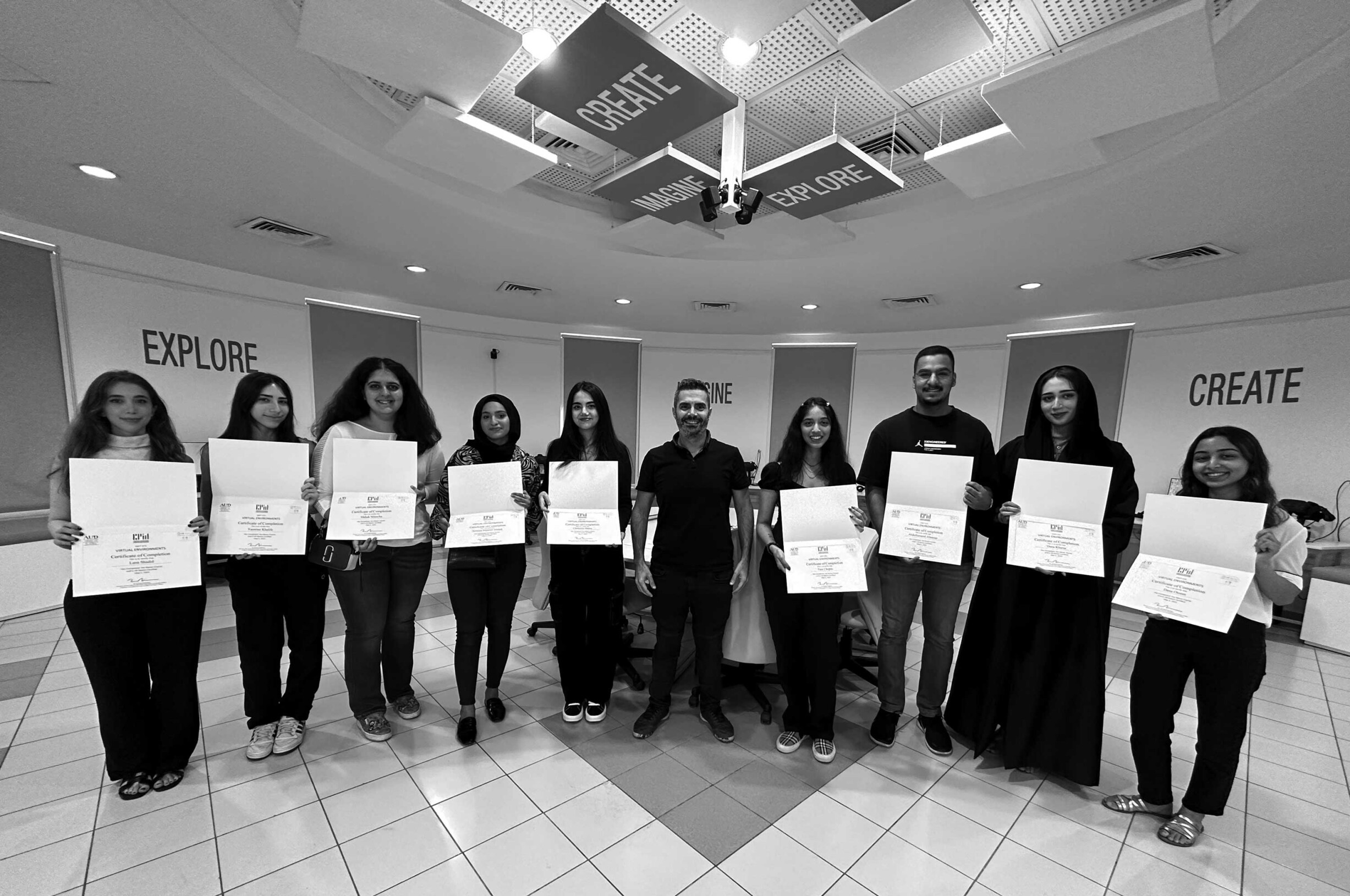
Among the innovative courses I instruct utilizing these tools is “DDFT 473 – Virtual Environments.” This unique module offers students the opportunity to create in an immersive manner virtual architecture within a VR framework, all based on a specific design brief.
Through the study of virtual phenomenology, to designing the virtual home in the metaverse or even the art of gamifying architecture by producing playful virtual spaces, students are submerged in VR for over 50 hours. This immersive experience is designed to enhance their skills, stimulate their creativity, and ultimately, earn them a VR Sketch certification. This certification not only marks their competency but also positions them competitively in the constantly evolving architectural market.
HC: As a professor, how do you inspire and encourage your students to push boundaries and strive for excellence in their architectural endeavors?
GK: As a professor, I believe that the first step towards inspiring students is to lead by example. My extensive career in architecture, design, research, and innovation serves as a tangible testament to the power of curiosity, perseverance, and resilience. By sharing my personal experiences, such as my explorations, the creation of unique spaces of wellbeing, the development of 'Airborne Architecture,' or the creativity of virtual architecture, I show my students the myriad of possibilities that lie ahead of them.
To encourage them to push boundaries, I equip them with cutting-edge tools and methodologies, such as virtual and augmented reality technologies, which not only augment their design skills but also foster an environment of experimentation and innovation.
In terms of striving for excellence, I emphasize the power of lifelong learning, resilience, and patience. This is embedded in all my teachings - be it the importance of keeping pace with technological advancements or the art of handling setbacks and staying patient. I often underline the idea that architecture is a field where growth is continuous and where every project, be it small or large, contributes to one's development as a professional.
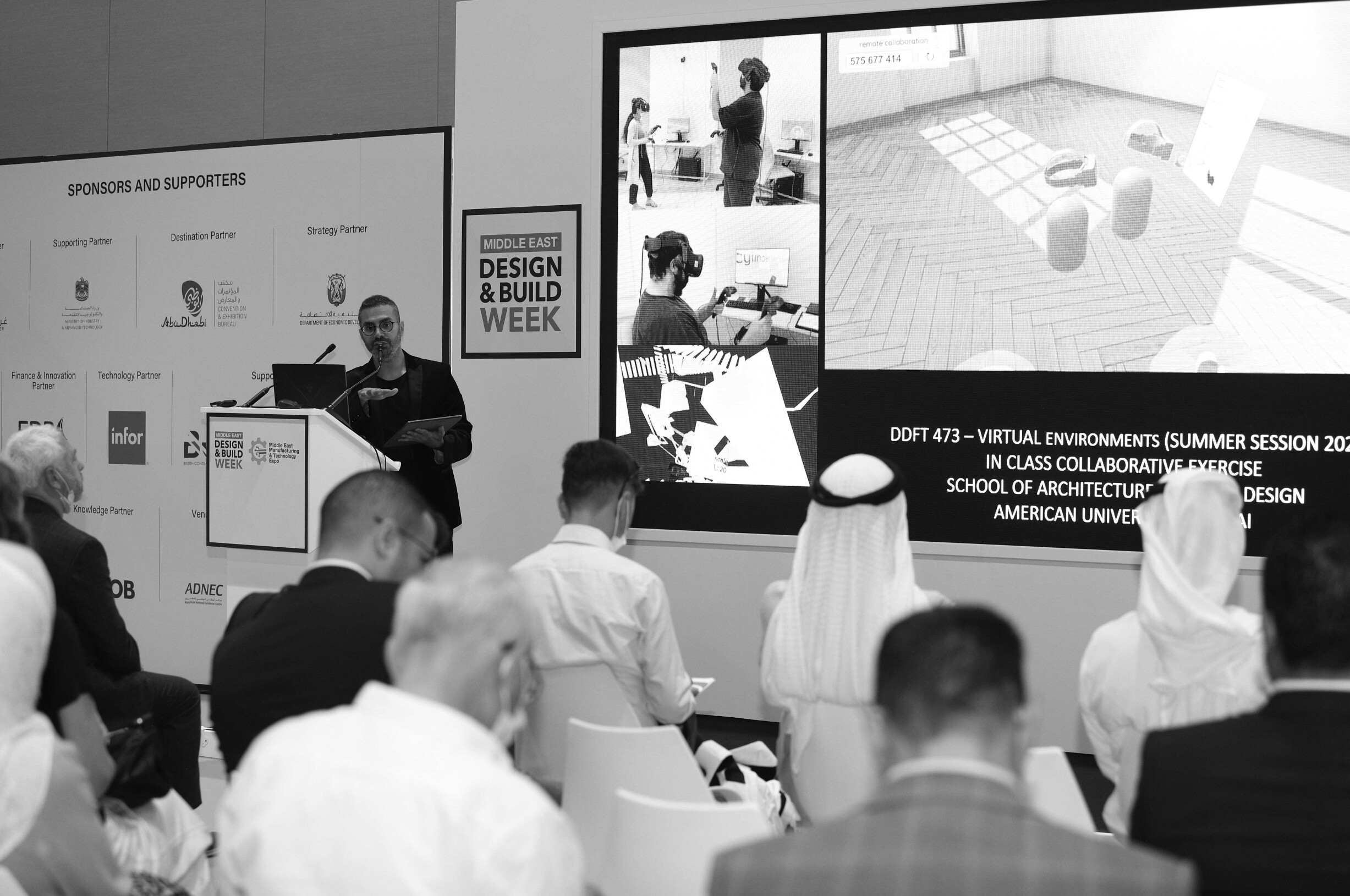
But perhaps most importantly, I inspire my students by helping them understand the transformative power of architecture – that the spaces they design can influence people's wellbeing and emotions, can serve as sanctuaries, and can even challenge our understanding of reality itself. By instilling this sense of purpose and potential impact, I believe students naturally aspire to excel, not just for grades, but to make a positive difference in the world.
HC: As an artist, you refer that each drawing is "created using a fusion of automatism techniques and meditation practices...". Can you share with us what this method consists of and what its purpose is?
GK: I started the artwork "UNCONSCIOUS" back when I was residing in Tokyo. It is an ever-evolving visual metaphor for the infinite expanses of the cosmos. Embodying a seamless dance between micro and macro phenomena, this collection of over a hundred pieces transcends restrictions, categories, and boundaries. The process is a unique blend of automatism techniques and meditation practices. Automatism, originating from the Surrealist movement, involves creating art without conscious thought, allowing the subconscious mind to take over. It is akin to doodling, but instead of mindlessly sketching, you are actively surrendering control to your subconscious.
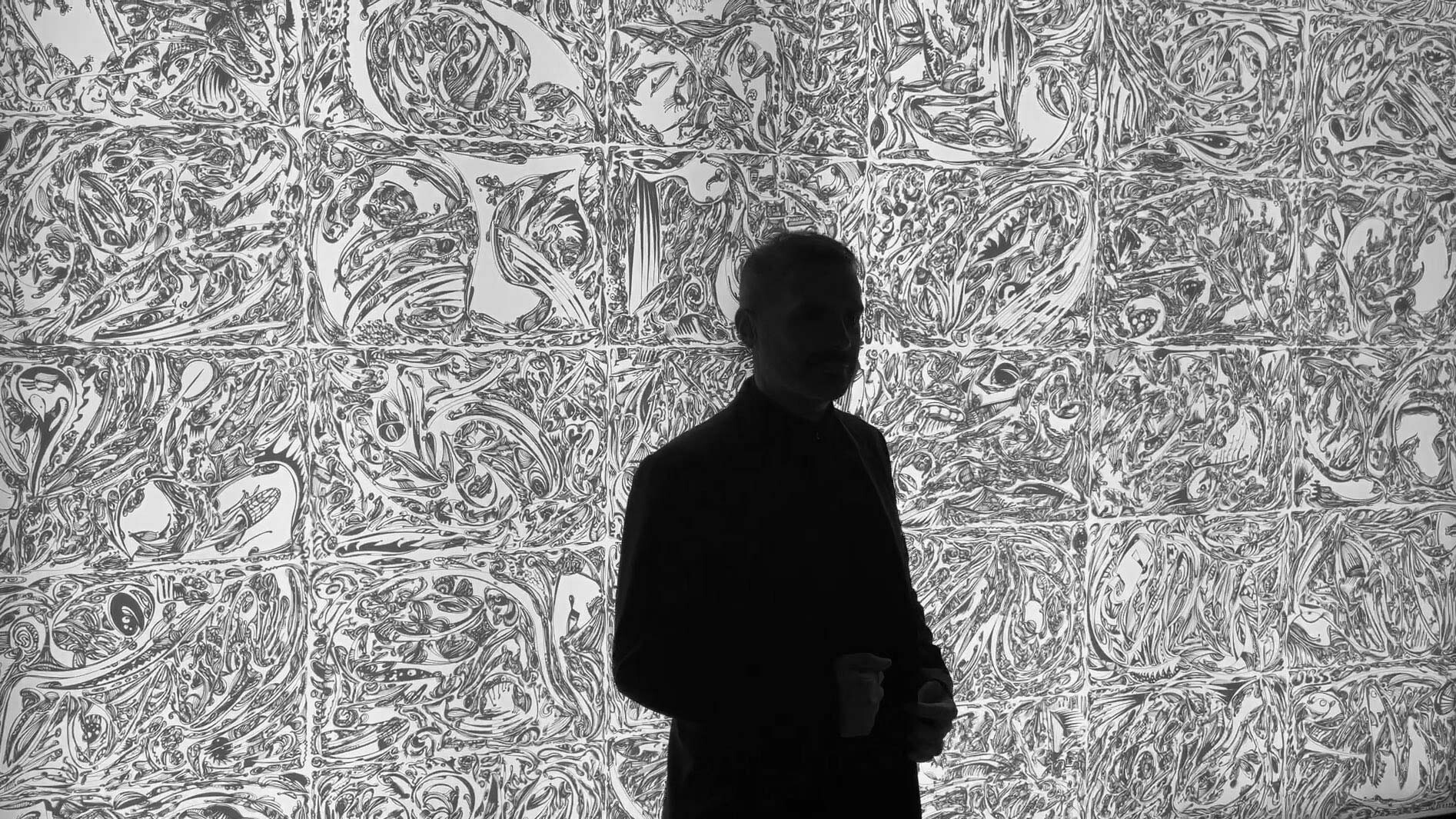
On the other hand, meditation is a practice that involves calming the mind, focusing inward, and achieving a heightened state of awareness. In the context of my artwork, it serves as the gateway to tap into my unconscious mind, facilitating a deeper connection with my creativity and through it with the collective unconsciousness.
When I combine these two techniques, it allows for an uninhibited flow of artistic expression. This method takes me into a trance-like state where I cease to exist and my intuition and subconscious guide the art I produce, rather than conscious thought and intention. This not only makes each piece a spontaneous act of creation but also infuses the work with an organic and authentic energy that reflects the boundless nature of the universe.
The purpose of this approach is manifold. Firstly, it enables me to bypass any preconceived notions or intellectual constraints that might impede the creative process. Secondly, it cultivates a sense of oneness with the cosmos, thereby imbuing the artwork with a depth and richness that echoes the interconnectedness of all things. Lastly, it allows viewers to engage with the artwork without any imposed interpretations, giving them the freedom to draw their own meanings from each piece. The work has been exhibited in many forums in Venice, Munich, Dubai, and London.
HC: In your book "INCARNATIONS: at Immortality's Threshold," you aim to invite readers to reflect on the eternal evolution and expansion of our collective consciousness. How do you believe architecture can play a role in facilitating this reflection and fostering a deeper connection between individuals and their surroundings?
GK: Certainly, Architecture, at its core, is more than just constructing buildings or designing physical spaces. It's about creating environments that influence our behaviors, emotions, and thoughts. By carefully considering how a space is designed, architects have the ability to inspire a deeper connection between individuals and their surroundings, fostering a sense of unity, and reminding us of our connection to the greater whole.
INCARNATIONS represents a distinctive project that I have devoted more than ten years of my life to. The book beckons the reader to introspect on our existential condition and perhaps unearth answers to the toughest questions that bear the greatest significance. This work, an autofiction and a self-help guide, consists of nine insightful chapters and one allegorical tale.
Each chapter is designed to stimulate thought, provoking readers to challenge their preconceived notions and reexamine our collective human predicament.

The revelations nestled within these pages are intended to be forward-thinking without definitive conclusions, thus establishing a path for ongoing exploration into the infinite development and broadening of our shared consciousness.
As a perpetual explorer of life's mysteries, I wish to share my three-decade journey with the reader, imparting the knowledge I have accumulated in hopes that it might serve as a beacon, aiding each individual in their quest for the connection they seek.
HC: What advice would you give to aspiring architects who aspire to success in architecture practice in their careers?
GK: For aspiring architects seeking to flourish in their careers, I would underscore the importance of three vital elements that I myself practice:
Firstly, establish a profound connection with the universe that surrounds us. This connection serves as an eternal source of energy, inspiration, and rejuvenation. It allows you to stay motivated and empowered, it provides you the opportunity to observe, learn, and draw from the world around you, imbuing your work with depth and relevance.
Secondly, grasp the power of compounding. It is about consistent efforts, small steps that add up over time, ultimately allowing you to manifest your visions into reality. Remember, Rome was not built in a day, and neither will be your masterpieces.
Lastly, embody patient resilience. The path to achieving your goals might be laden with challenges and setbacks, but with patience and tenacity, you can navigate through them. Keep your vision clear, hold your passion dear, and persist with unwavering resilience. Success in architecture, like any meaningful pursuit, is a marathon, not a sprint.
HC: What are your future goals and aspirations, both as an architect and as a professor, considering your past success in both realms?
GK: My future aspirations revolve around continuing to push the boundaries of what we perceive as possible in these fields. As an architect, I aim to further explore and develop the concept of 'Airborne Architecture' and continue my research into how space can be crafted to elevate human wellbeing.
In the realm of academia, my vision is to further foster a learning environment that empowers students to see beyond traditional architectural practices and challenges them to innovate. My goal is to help them not just to learn but to critically think, innovate, and be the change-makers in architecture.
As an artist, my aspiration lies in ceaselessly evolving 'UNCONSCIOUS,' perpetually unveiling it in a variety of platforms, each time with distinctive compilations, dimensions, and mediums, thus maintaining its dynamic and ever-expanding nature.
Moreover, as the Director of CRID, I aim to ensure that our research and innovation efforts stay ahead of the curve. This involves not only adopting the latest technology and approaches but also promoting a culture of inquiry, experimentation, and lifelong learning among students and faculty alike.